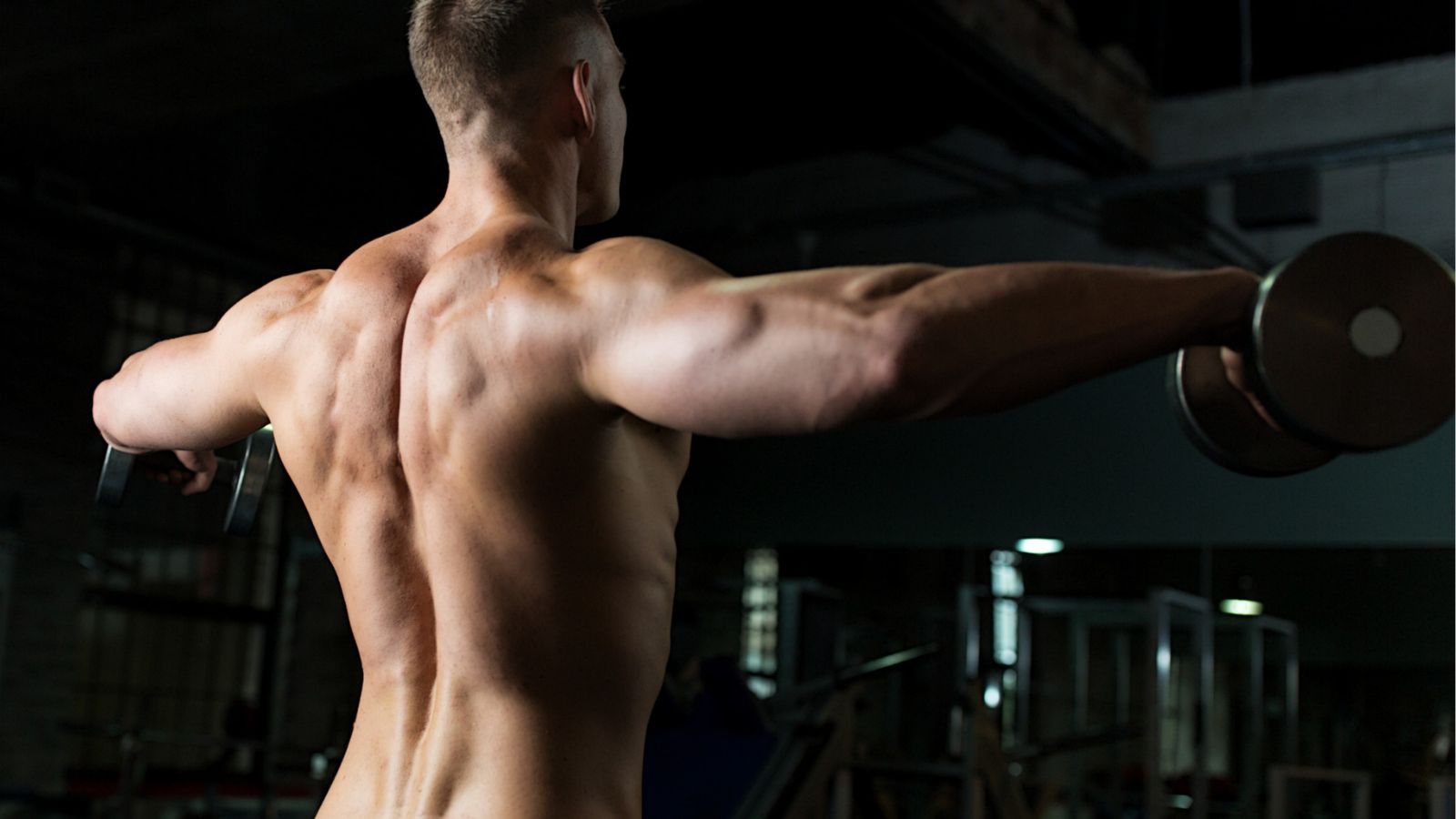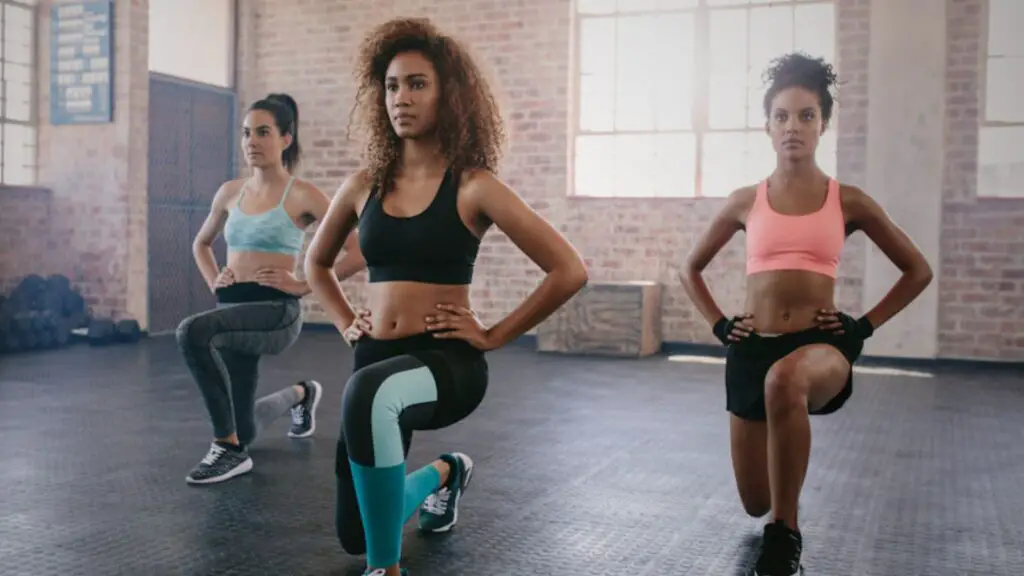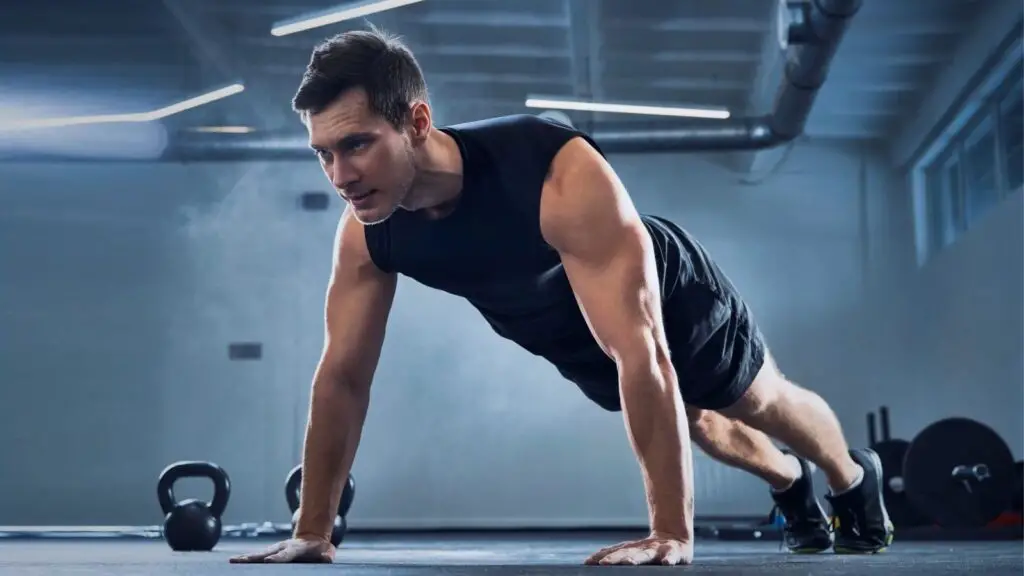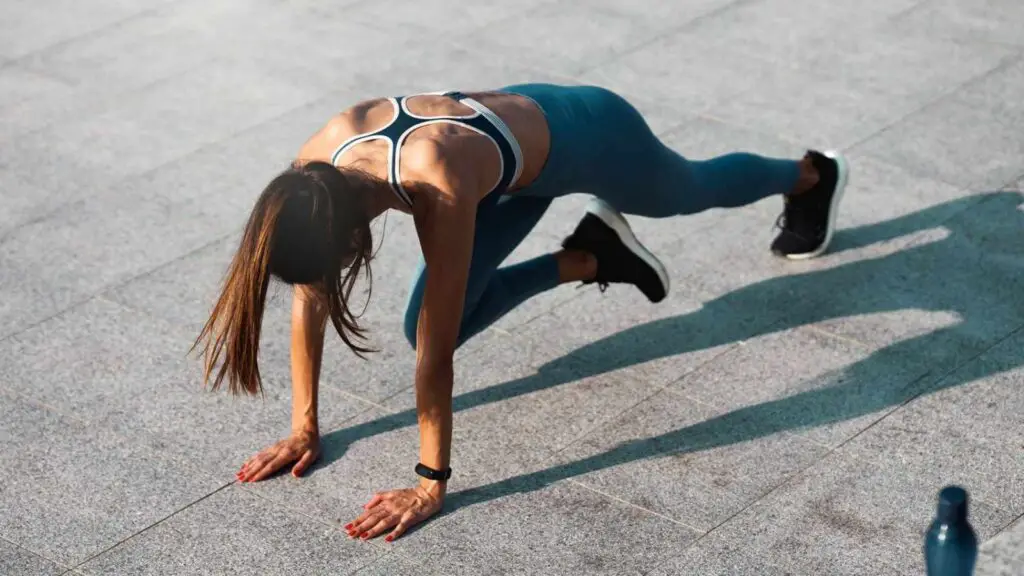Shoulder press or Lateral raise?
Shoulder press and Lateral raise?
Finding the right workout for your shoulders can often be the hardest thing when working out. You injure your shoulder, and your essentially restricted from training your upper body.
So YES, finding the right shoulder workout is important but doing it correctly is even more.
In this article we discuss the Shoulder Press vs Lateral Raise; should you be doing both together or is one better than the other?
What are the similarities?
Shoulder press and lateral raise both target the deltoid muscles. They do however differ in execution and the specific areas of the deltoids they emphasize.
Despite some differences, they share similarities:
- Deltoid Emphasis: Both exercises primarily target the deltoid muscles. The shoulder press focuses more on the front deltoids (anterior deltoids), while the lateral raise primarily targets the side deltoids (lateral deltoids).
- Free Weights: Both exercises can be performed using free weights, such as dumbbells. This allows for a full range of motion and the use of stabilizer muscles.
- Standing Position: You can perform both exercises while standing, which requires balance and engages core muscles for stability.
- Controlled Movement: To execute both exercises effectively, you need to control the weight and maintain proper form throughout the range of motion.
- Progressive Overload: In both exercises, you can progressively increase the weight to challenge and stimulate the muscles for growth and strength development.
- Shoulder Stability: Both exercises can contribute to improved shoulder stability, which is important for injury prevention and overall shoulder health.
- Versatility: Shoulder presses and lateral raises are versatile exercises that can be integrated into various workout routines and training programs to target the shoulder muscles.
What are the differences?
While the shoulder press and lateral raise share these similarities, it’s essential to recognize their differences:
- Movement Pattern: Shoulder presses involve a pressing motion overhead, working the front deltoids more, while lateral raises involve a lifting motion to the sides, targeting the side deltoids specifically.
- Exercise Variation: Shoulder press is a compound exercise, often involving heavier weights, while lateral raise is an isolation exercise focusing on a single muscle group with lighter weights.
- Intensity: Shoulder presses are typically more intense and involve lifting heavier weights, making them suitable for building strength, while lateral raises are generally used for muscle isolation and hypertrophy.
- Shoulder Mobility: Lateral raises may promote better shoulder mobility and lateral deltoid development, whereas shoulder presses may provide a more comprehensive workout for the shoulder complex.
Both exercises contribute to overall shoulder development, but they emphasize different aspects of the deltoid muscles.
Integrating both exercises into your workout routine can provide a well-rounded approach to shoulder training.
Target muscle
Though the shoulder press and lateral raise work the shoulder muscles, they target different muscles within the complex.

Here’s a breakdown of the target muscles for each of these exercises:
Shoulder Press (Overhead Press)
- Front Deltoids (Anterior Deltoids): The primary target muscle for the shoulder press is the deltoid muscle group., specifically, the anterior deltoid, which is the front part of the deltoid muscles.
- Side Deltoids (Lateral Deltoid): The lateral deltoid is also engaged during the shoulder press, especially during the lifting phase. It assists in lifting the arm out to the sides, playing a secondary role in the exercise.
- Triceps Brachii: The triceps brachii, the muscles at the back of the upper arm, assist in extending the elbow during the pressing phase of the exercise.
Lateral Raise (Lateral Dumbbell Raise)
- Side Deltoids (Lateral Deltoids): The primary and most significant target of the lateral raise is the lateral deltoid. This muscle is responsible for the abduction of the arm, which involves lifting the arm outward to the side of the body.
- Front Deltoid (Anterior Deltoid): The anterior deltoid is engaged to some extent during the lateral raise, particularly as you lift the dumbbells before moving them laterally.
- Rear Deltoid (Posterior Deltoid): The posterior deltoid, located at the back of the shoulder, also plays some role in the lateral raise, mainly in stabilizing the shoulder joint during the movement.
- Supraspinatus (Rotator Cuff Muscle): The supraspinatus muscle, which is part of the rotator cuff, is involved in the initial phase of the lateral raise as it assists in lifting the arm laterally.
The shoulder press primarily targets the anterior deltoid, while the lateral raise isolates and targets the lateral deltoid.
How to do Shoulder Press?
The shoulder press, also known as the overhead press, is a compound exercise that primarily targets the shoulder muscles.
Here’s how you can perform a shoulder press using a barbell or dumbbells:
Using a Barbell
- Set Up: Start by loading a barbell with an appropriate weight. You can use a squat rack or a dedicated bench press station with a barbell support. Place the barbell at chest height or slightly lower on the rack.
- Positioning: Stand in front of the barbell with your feet hip-width apart. Your chest should be up, and your back should be straight. Grip the barbell slightly wider than shoulder-width, with your palms facing forward.
- Lift the Bar: Lift the bar off the rack by straightening your hips and knees. The bar should be resting on your upper chest with your elbows pointed forward.
- Pressing: Take a deep breath, brace your core, and then push the barbell upward. Extend your arms fully, but do not lock your elbows. Keep your head in a neutral position, and make sure the barbell moves in a straight line.
- Lowering: Lower the barbell under control back to the starting position, just above your upper chest. Avoid letting the barbell crash onto your chest.
- Repetitions: Perform the desired number of repetitions and then carefully re-rack the barbell on the rack.
Using Dumbbells
- Set Up: Sit on a bench with back support and set the bench to a 90-degree angle or use a dedicated adjustable bench. Place a dumbbell in each hand on your thighs.
- Positioning: Sit with your back firmly against the bench, feet flat on the floor, and your core engaged. Hold a dumbbell in each hand with your palms facing forward. The dumbbells should be at shoulder height.
- Pressing: Take a deep breath and press the dumbbells overhead by extending your arms fully. Keep your palms facing forward throughout the movement.
- Lowering: Lower the dumbbells back to the starting position, just above shoulder height. Ensure controlled movement during the descent.
- Repetitions: Perform the desired number of repetitions. When done, carefully place the dumbbells back on your thighs, then stand up and re-rack the dumbbells.
Tips for a successful shoulder press:
- Maintain proper form with a neutral spine and engaged core.
- Keep your elbows slightly in front of the bar or dumbbells to protect your shoulder joints.
- Use a weight that challenges you but allows you to maintain good form.
- Breathe properly, inhaling before the lift and exhaling during the press.
The shoulder press can also be performed while standing, using a Smith machine, or with resistance bands. Always start with a light warm-up set and gradually increase the weight as you become more comfortable with the exercise.
When should you do Shoulder Press?
When to incorporate the shoulder press into your workout routine depends on your overall training program and goals.
Here are some common scenarios for when to include the shoulder press:
- Strength Training or Resistance Training Routine: You can include the shoulder press in your strength training or resistance training routine, whether you’re following a full-body workout plan or a specific upper-body workout.
- Dedicated Shoulder Workout: If you want to prioritize shoulder development, you can have a dedicated shoulder workout session where you perform various shoulder exercises, including the shoulder press.
- Push Day: Some people incorporate the shoulder press on their push day, which focuses on exercises that involve pushing movements.
- Upper-Body Split: If you’re following an upper-body split routine, you might include the shoulder press on a specific day when you target your upper body.
- End of Workout: Some individuals prefer to perform shoulder exercises, including the shoulder press, at the end of their workout. This prevents fatigue that might hinder performance in other exercises.
- Functional Training: If your goal is functional fitness, the shoulder press is a valuable exercise for developing upper body strength and stability. Incorporate it into your training to enhance your ability to push objects overhead.
- Specific Training Goals: Adjust when you do the shoulder press based on your specific goals. For instance, if you’re training for a strength competition, you might focus on heavy shoulder pressing.
Remember to include a warm-up to prepare your shoulders and prevent injury, and tailor your routine to your fitness level and goals.
Benefits of Shoulder Press
The shoulder press, also known as the overhead press, is a fundamental strength-training exercise that offers a wide range of benefits, primarily targeting the shoulder muscles.
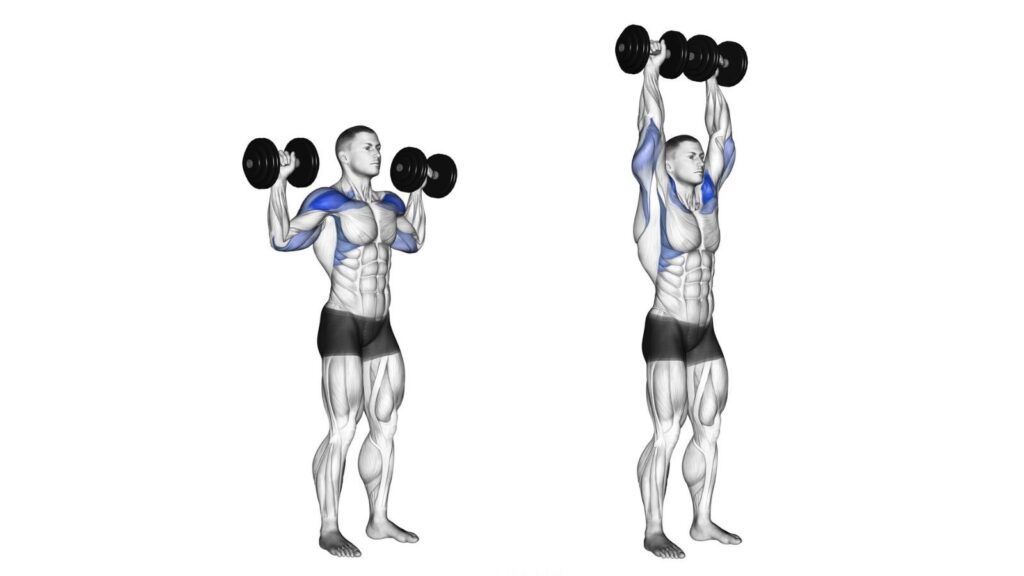
Here are some of the key benefits of including the shoulder press in your workout routine:
- Strengthening the Shoulder Muscles: The primary benefit of the shoulder press is the development and strengthening of the shoulder muscles, including the deltoids.
- Functional Upper Body Strength: Shoulder press engages multiple muscle groups, helping improve overall upper body strength and stability, making daily tasks and activities easier.
- Improved Posture: Strengthening the shoulder and upper back muscles through the shoulder press can contribute to better posture by helping to counteract the effects of slouching and rounded shoulders.
- Enhanced Core Engagement: Maintaining proper form during the shoulder press requires strong core engagement. This exercise can help develop core strength and stability.
- Increased Bone Density: Weight-bearing exercises like the shoulder press promote bone health and density, reducing the risk of osteoporosis.
- Enhanced Upper Body Aesthetics: Regularly incorporating the shoulder press into your workout routine can contribute to a more balanced and aesthetically pleasing upper body, creating a V-taper appearance.
- Better Athletic Performance: Strong shoulders and upper body muscles are essential for various sports and activities, including weightlifting, powerlifting, and throwing sports.
- Full-Body Stabilization: The shoulder press requires the use of various stabilizer muscles, making it a functional exercise for enhancing overall body stability and control.
- Improved Overhead Lifting Abilities: The shoulder press can translate into better performance in other exercises or activities that involve lifting objects overhead.
- Progressive Overload: As you get stronger, you can progressively increase the weight you lift during shoulder presses, promoting muscle growth and continued strength development.
- Mental Focus: Performing heavy shoulder presses requires focus and mental strength, which can help improve your overall mental discipline.
- Versatility: The shoulder press can be performed with various equipment, including barbells, dumbbells, kettlebells, and resistance bands, making it adaptable to different fitness levels and settings.
It’s important to note that while the shoulder press offers numerous benefits, it should be performed with proper form to prevent injury.
Cons of Shoulder Press
While the shoulder press offers several benefits, it also has its share of potential drawbacks and cons, especially if performed improperly or if certain precautions are not taken. Here are some of the potential disadvantages and considerations associated with the shoulder press:
- Risk of Shoulder Injury: The shoulder press places a significant load on the shoulder joints, and improper form, excessive weight, or overuse can lead to shoulder injuries.
- Neck and Spinal Strain: Poor form during the exercise can lead to neck and spinal strain, especially if you use excessive weights or hyperextend your neck to get the barbell or dumbbells overhead.
- Difficulty for Beginners: The shoulder press can be challenging for beginners, and it may take some time to develop the necessary strength and coordination to perform the exercise effectively and safely.
- Lack of Access to Equipment: Access to barbells and a squat rack or dedicated bench press station may be limited in some gyms or home setups, which can make it challenging to perform the shoulder press.
- Muscle Imbalances: Focusing excessively on the front deltoids without balancing with exercises for the rear deltoids and other shoulder muscles can lead to muscle imbalances and increased risk of injury.
- Overuse Injuries: Overtraining or performing the shoulder press too frequently without sufficient recovery can lead to overuse injuries in the shoulder, such as tendinitis.
- Not Suitable for Everyone: Individuals with certain pre-existing shoulder issues or mobility limitations may not be able to perform the shoulder press safely, and it may exacerbate their condition.
- Inadequate Warm-Up: Failing to warm up properly before the shoulder press can increase the risk of injury. It’s essential to prepare the shoulder joints and muscles with dynamic stretches and warm-up exercises.
- Ineffective Form: Performing the shoulder press with poor form, such as excessive arching of the lower back, can strain the lower back and lead to discomfort or injury.
- Limited Range of Motion: Some individuals may have limited shoulder mobility, making it challenging to perform the shoulder press with a full range of motion, reducing exercise effectiveness while increasing the risk of injury.
It’s crucial to use proper form, progressively increase the weight as your strength improves, include a balanced shoulder workout routine, and ensure you warm up adequately.
If you have any pre-existing shoulder issues or doubts about the exercise’s safety for you, it’s a good idea to consult with a healthcare professional or a qualified fitness trainer for guidance and recommendations.
How to do Lateral Raise?
The Lateral Raise, also known as the Lateral Dumbbell Raise, is an isolation exercise that primarily targets the lateral deltoid (side deltoid) muscles.
Here’s how to perform the lateral raise with proper form:
Using Dumbbells:
- Set Up: Stand up straight with your feet shoulder-width apart. Hold a dumbbell in each hand by your sides, with your palms facing your body. Choose an appropriate weight that allows you to perform the exercise with good form.
- Positioning: Keep your back straight, chest up, and your core engaged for stability. Maintain a slight bend in your elbows throughout the exercise.
- Lifting: Begin the movement by raising both dumbbells simultaneously out to the sides. Your arms should be straight, and your hands and wrists should remain in a neutral position. Lift the dumbbells until they are at shoulder level or slightly below, forming a “T” shape with your body.
- Hold and Squeeze: At the top of the movement, pause for a brief moment and contract your lateral deltoids. Focus on feeling the tension in your side deltoids.
- Lowering: Lower the dumbbells back down under control to the starting position, with your arms by your sides.
- Repetitions: Perform the desired number of repetitions while maintaining proper form and control. Typically, this exercise is done for higher repetitions to target muscle endurance and hypertrophy.
Tips for a successful Lateral Raise:
- Keep the movement smooth and controlled. Avoid using momentum to lift the dumbbells.
- Exhale as you lift the dumbbells and inhale as you lower them.
- Avoid swinging your torso or using your lower back to assist in the lift. Maintain good posture throughout.
- Start with a weight that allows you to perform the exercise with proper form. You can gradually increase the weight as you become more comfortable with the movement.
- It’s essential to use slow and controlled movements to maximize the isolation of the lateral deltoids.
The lateral raise is an effective exercise for targeting the lateral deltoid and can help build shoulder width and strength. Including it in your shoulder workout routine can contribute to well-rounded shoulder development.
When should you do Lateral Raise?
When to incorporate the lateral raise into your workout routine depends on your overall training program, goals, and preferences.
Here are some common scenarios for including the Lateral Raise:
- Shoulder Workout: The lateral raise is a valuable addition to your shoulder workout routine. You can include it along with other shoulder exercises, to provide a comprehensive shoulder workout.
- Upper Body or Push Day: You can incorporate the lateral raise on upper body or push-focused workout days. This is especially beneficial if you follow a split routine where you target different muscle groups on different days.
- Dedicated Shoulder Day: You may have a dedicated day solely focused on shoulder training. On this day, you can perform a variety of shoulder exercises, including the lateral raise, to prioritize shoulder development.
- Variation in Shoulder Routine: To add variety to your shoulder routine and prevent workout plateaus, consider using the lateral raise as an alternative to other shoulder exercises. This can help keep your workouts interesting.
- Muscle Imbalance Correction: If you’re looking to address muscle imbalances within the shoulder complex, the lateral raise can help target the side deltoids, which are sometimes underemphasized in standard shoulder workouts.
- Warm-Up or Rehabilitation: The lateral raise can be used as part of your warm-up or rehabilitation routine to prepare the shoulder joints and muscles for more intense exercises, reducing the risk of injury.
- Progressive Overload: As you become more proficient at the lateral raise, you can progressively increase the weight you lift, promoting muscle growth and strength development.
- High-Rep and Low-Rep Work: The lateral raise can be used for both high-repetition sets to target muscle endurance and low-repetition sets to promote muscle strength and hypertrophy, depending on your goals.
Remember to use proper form, start with a weight that allows you to perform the exercise with control, and adapt your training to your fitness level and goals.
If you have any specific fitness objectives or concerns, consider consulting with a qualified fitness trainer to create a tailored workout plan.
Benefits of Lateral Raise
The Lateral Raise is an effective shoulder exercise that offers several benefits, especially when done correctly and with proper form.
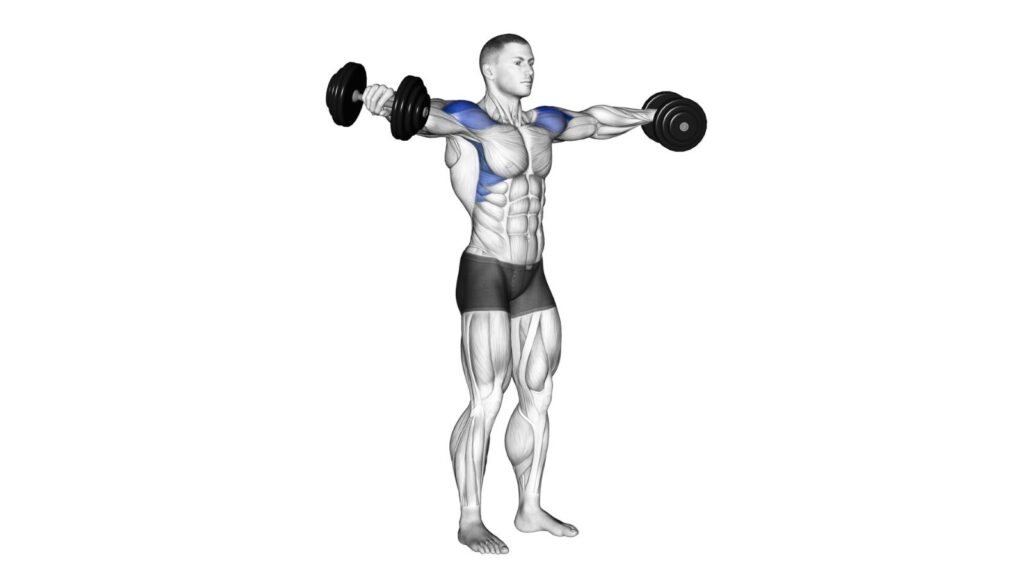
Here are the key benefits of including the Lateral Raise in your workout routine:
- Targeted Shoulder Development: The lateral raise helps to build strength and size in the lateral deltoid (side deltoid). It can contribute to broader shoulders and a more well-rounded shoulder appearance.
- Balanced Shoulder Development: Including the lateral raise in your shoulder routine helps maintain balanced shoulder muscle development. This can help prevent muscle imbalances that can lead to injury and poor posture.
- Shoulder Width: By strengthening and developing the lateral deltoids, the lateral raise can create the illusion of broader shoulders, enhancing your overall physique.
- Improved Shoulder Definition: Regularly performing lateral raises can also lead to more defined and sculpted shoulder muscles, enhancing your overall aesthetic appearance.
- Enhanced Shoulder Mobility: The exercise can improve shoulder joint mobility and stability, which is beneficial for everyday activities and sports performance.
- Muscle Isolation: The lateral raise is an isolation exercise, allowing you to specifically target the lateral deltoids without engaging other muscle groups extensively.
- Progressive Overload: You can progressively increase the weight you lift during lateral raises as you get stronger, promoting muscle growth and strength development.
- Muscle Endurance: Performing higher repetitions with lighter weights during lateral raises can improve muscle endurance, which is important for activities that require sustained shoulder strength.
- Functional Fitness: The exercise mimics everyday movements that involve lifting objects or performing actions that require lateral arm motion.
- Versatility: Lateral raises can be done with dumbbells, resistance bands, or other equipment, making it adaptable to various fitness levels and settings.
- Injury Prevention: Strong lateral deltoids can help stabilize the shoulder joint and reduce the risk of shoulder injuries, such as impingements.
- Variety: The lateral raise provides variety in your shoulder workout routine, helping to prevent plateaus and keep your workouts interesting.
To fully benefit from lateral raises and minimize the risk of injury, it’s important to use proper form, start with a weight that allows controlled movement, and progressively increase the weight as you become more proficient.
Cons of Lateral Raise
While the lateral raise is an effective exercise for targeting the lateral deltoid muscles, with numerous benefits, it does have some potential drawbacks and considerations to be aware of:
- Limited Muscle Engagement: The lateral raise is an isolation exercise that primarily targets the lateral deltoids. It does not engage other muscle groups significantly, which can be a disadvantage if you’re looking for compound exercises.
- Potential for Overuse Injuries: Overtraining or performing the lateral raise too frequently without sufficient recovery can lead to overuse injuries in the shoulder area, such as tendinitis or impingement.
- Weight Limitations: Lateral raises are typically performed with lighter weights compared to compound exercises. If your goal is to lift heavy weights for muscle growth and strength, you may find the exercise less suitable.
- Limited Functional Carryover: While the exercise targets a specific muscle group, it doesn’t have as much direct functional carryover to everyday activities or sports compared to compound movements.
- Technical Challenges: Maintaining proper form and control during lateral raises can be challenging, especially as you increase the weight. Using momentum or improper technique can compromise the effectiveness of the exercise and increase the risk of injury.
- May Require Equipment: To perform lateral raises with resistance, you typically need dumbbells or other equipment, which may not be readily available in all workout settings.
- Muscle Imbalance: If you overemphasize the lateral deltoids at the expense of other shoulder muscles, it can lead to muscle imbalances, which might contribute to postural issues and shoulder problems.
- Injury Risk: Improper form or lifting too much weight can increase the risk of injury to the shoulder joint, especially if you perform the exercise with jerky or uncontrolled movements.
- Inadequate Warm-Up: Failing to warm up the shoulder muscles properly before performing lateral raises can increase the risk of injury. It’s essential to prepare the shoulder joints and muscles with dynamic stretches and warm-up exercises.
- Progress Plateaus: While the exercise is effective, your muscles may adapt over time, leading to progress plateaus. To continue benefiting from Lateral Raises, you’ll need to progressively challenge your muscles.
To mitigate these potential cons and fully benefit from lateral raises, it’s crucial to prioritize proper form. Learn how to do the exercise correctly before adding it to your training routine.
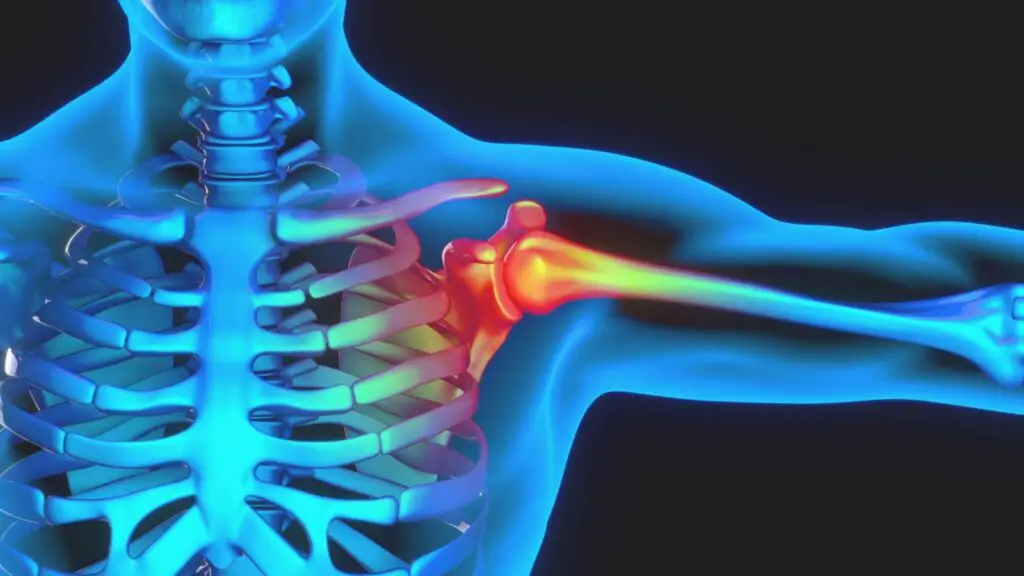
If you experience discomfort or pain while performing the exercise, it’s essential to stop and seek guidance.
FAQs
Can you do both shoulder press and lateral raise together?
Yes, you can!
Doing both exercises can be a great addition to your workout routine, targeting the anterior and lateral deltoids. This gives you more balanced shoulder development.
Check out our comparison between Shoulder Press vs Arnold Press, to get an idea of more exercises for the perfect shoulders.
Are dumbbells the best for lateral raises?
There are many variations for doing lateral raises, using machines, cables and even kettlebells.
Dumbbells aren’t the ‘best’, but they are certainly the most popular choice. The choice of equipment depends on your goals, preferences, and the resources available to you.
Whichever equipment you choose, prioritize proper form, start with an appropriate weight, and focus on controlled movements to maximize the benefits of the exercise.
